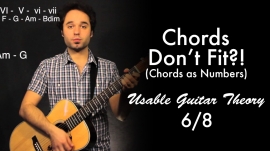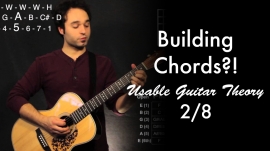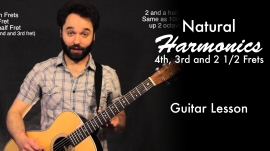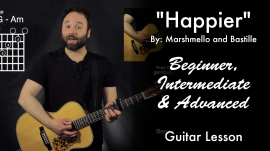Life is short. Tritone Substitutions are cool.
This is an awesome way to start spicing up your song/cover and understand why some of those random dominant 7 chords pop up.
The basic idea is that the dominant chord “dominates the key”, really allows us the most tension before we resolve the chord. That’s why there are so many variations on our extended dominant chord. Essentially the Tritone substitution acts as another way to create that tension. The why comes into play with the function of the notes and how they resolve in both our diatonic dominant (the normal “V” chord) and our new Tritone substitution.
Key of C | I = C | V=G7 | Tritone Sub=Db7
C = C-E-G
G7=G-B-D-F
Db7=Db-F-Ab-B (Cb)
The main resolution comes from our G7’s B resolving up to the root of the C (3rd of V resolves to root of I chord) and the G7’s F resolving down to the E of the C (7th of V resolves to 3rd of I chord).
The tritone has the same resolution only flipped. The B (Cb) of the Db7 resolves up to the root of the I chord (7 of the Tritone resolves to the root of I chord) and the F of the Db7 resolves down to the E of the C (3rd of the Tritone resolves to the 3rd of the I chord).
Below are some of the examples I talk about within the video… Songwriting example, jazz example and even lead (arpeggio) example! Dig.
-Related Lessons-
0:30 – Importance of the Dominant 7 Chord Blog
0:49 – Building Chords?! | UGT 2/8
0:49 – Extended (7 9 11 13) Chords?! | UGT 3/8
2:55 – Extended Chord Shapes
3:38 – Barred 7th Chords
3:52 – Extended Chord Shapes
4:25 – Transposing (Chords as Numbers)?! | UGT 5/8
5:33 – Playing Open Chords | BO 4/10
5:50 – Transposing (Chords as Numbers)?! | UGT 5/8
6:32 – Minor 7 Arpeggios
6:32 –Dominant 7 Arpeggios
6:32 – Major 7 Arpeggios
6:32 – Major 2 5 1 Arpeggios (Across the Whole Neck!)
PDF’s
Tritone Substitutions, Theory, Extended Chords, 7th Chords, Open & Barre Chords & 7th Arpeggios




